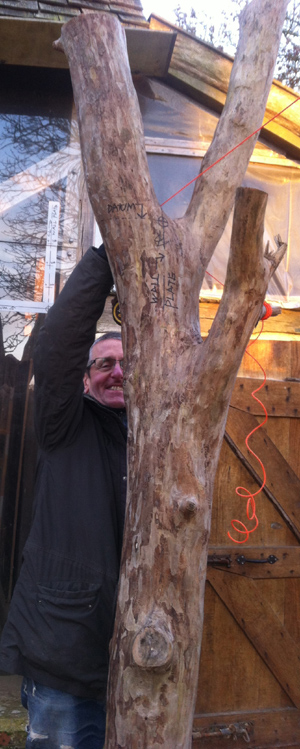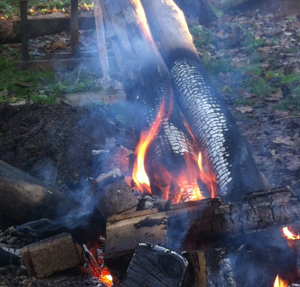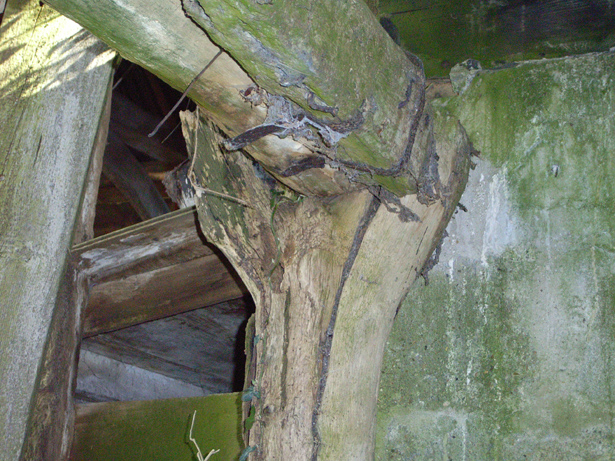Subscribe
to Orchard Barn's mailing list and receive
all
the latest offers on courses, volunteer tips and highlights and my
BLOGS
about the project ....
AND you'll be entered for a competition
to win a one
day course at Orchard Barn.
Get lucky.
Choose from the
Natural Building Experience, A Day in the Woods, Deadwood Screens,
Wattle and Daub, Intro to using Lime, Clay Selfies, Greenwood in
Building, Off-grid Compost Toilets ...

Mike plots datum lines on this Y-post

Steve
chars the base of these Y-posts
|
|
A Word to the
Y’s
by Sarah
Partridge 7th June 2019
Back in 2007 I commissioned a
Historic Building Survey of
Orchard Barn from Building Historian Leigh
Alston. I remember being baffled by
the word vernacular, but catching the excitement of his description of
the ‘primitive earth-fast Y-post’. ‘Vernacular’,
I have come to understand as
building with local materials using styles that inevitably were
developed from
knowledge of the materials.
Leigh’s report described ‘an
arcade post with a forked top to support the roof plate’. This post was holding up a simple roof that
was either the remains of the old cattle yard, or a cart lodge.
When the 19th
century post (regrettably) had to
be dug up, I added it to my growing museum of vernacular building
materials
that will one day (soon?) be on show in the barn.
Twelve long but learning-full
years later the excitement of
the earth-fast Y-post is still with me. Building with the natural
shapes of
trees just makes so much sense to me, and clearly was a fundamental
part of
former rural building practices. I started to see building materials
growing
wild in the woodland trees wherever I walked.
Here’s what I’ve learnt from
examining past methods of
so-called ‘primitive’ construction.
Firstly, that the base of an
earth-fast post was charred
before it was inserted into a deep hole. Charring the base of a fresh
log seals
it against fungal attack and rot. I’ve seen the base of 300 year old
earth-fast
posts, and they are remarkably sound!
Secondly, the importance of a
balanced Y. A true Y is a
naturally occurring crook in the main trunk of the tree. However since
these
are rare, chunky side branches at the right angle from the main trunk
appear to
have been used. Sourcing a stout enough tree with the crook occurring
at the
right can also be a challenge, especially if you want to sink 30” of
the base
into a hole in the ground!
Thirdly, that these methods of
building were far from
primitive. They require a keen eye for shape, a team of strong builders
and
plenty of skills along the way to ensure the vertical balance of your
Y-post is
completely vertical.
Fourthly, there is a real (and
almost lost) art to digging a
hole 30+ inches deep with straight sides that is not much wider than
your post.
Fifthly, our ancestors built with
what they could get hold
of and trusted the inherent properties of the materials they used. We
need to
recognise our 21st century disconnection from the natural
environment
has meant that we have all but lost this trust and is why we
subsequently over
engineer our buildings!
A word to the Y’s
please, natural buildings from the landscape are re-emerging.
Are you part of
the vernacular revolution?

The 19th century earth-fast
Y-post at Orchard Barn (probably Elm)
|
|